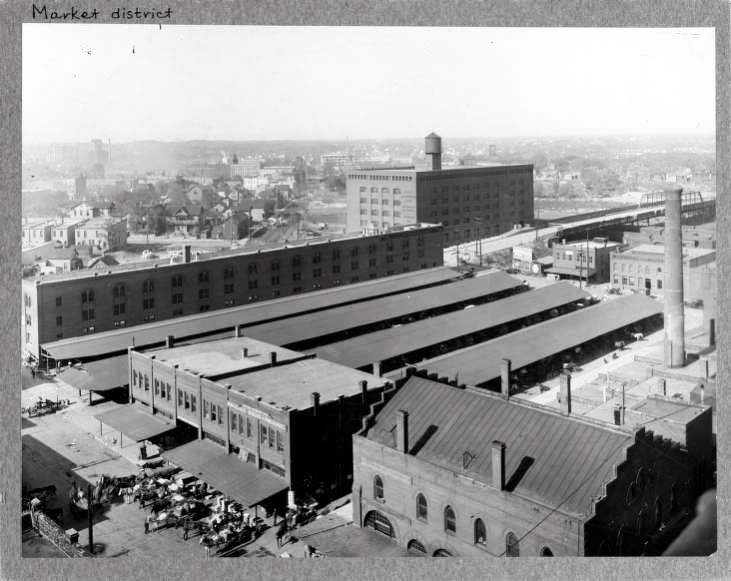Originally called Central Market, and then City Market or the Central City Market, Glenwood Market is a Minneapolis institution since 1893. In fact, when it burned the very next year, the fire made the front page of the New York Times. It was quickly rebuilt bigger than ever, and consists of many separate but connected parts: Commission Row, the Farmers Market, a Merchant Hall, as well as wholesale Fish, Flower, Meat and Produce markets.
While the existing buildings that make up the market opened in 1895, its history can be traced back to the 1860s when it was established in Gale's Market House at Bridge Square. It's on par with other long-standing public markets, such as Findlay Market in Cincinnati (est. 1855), Eastern Market in Washington (est. 1871), and Pike Place Market in Seattle (est. 1907).
The new market – constructed by T.B. Walker, who also founded the Walker Art Center – is now managed by a nonprofit board dedicated to maintaining its cultural integrity, landmark status in the Warehouse District, and well-deserved place as the soul of the city.

July 20, 1894

1900s

1895

1900

1904

1905

1910

1934
In reality, Interstate 394, and eventually Target Field's entry plaza, would occupy the site of the Central Market. The Minneapolis Farmers Market moved to what's now an awkward location on Lyndale Avenue directly next to Interstate 94.








